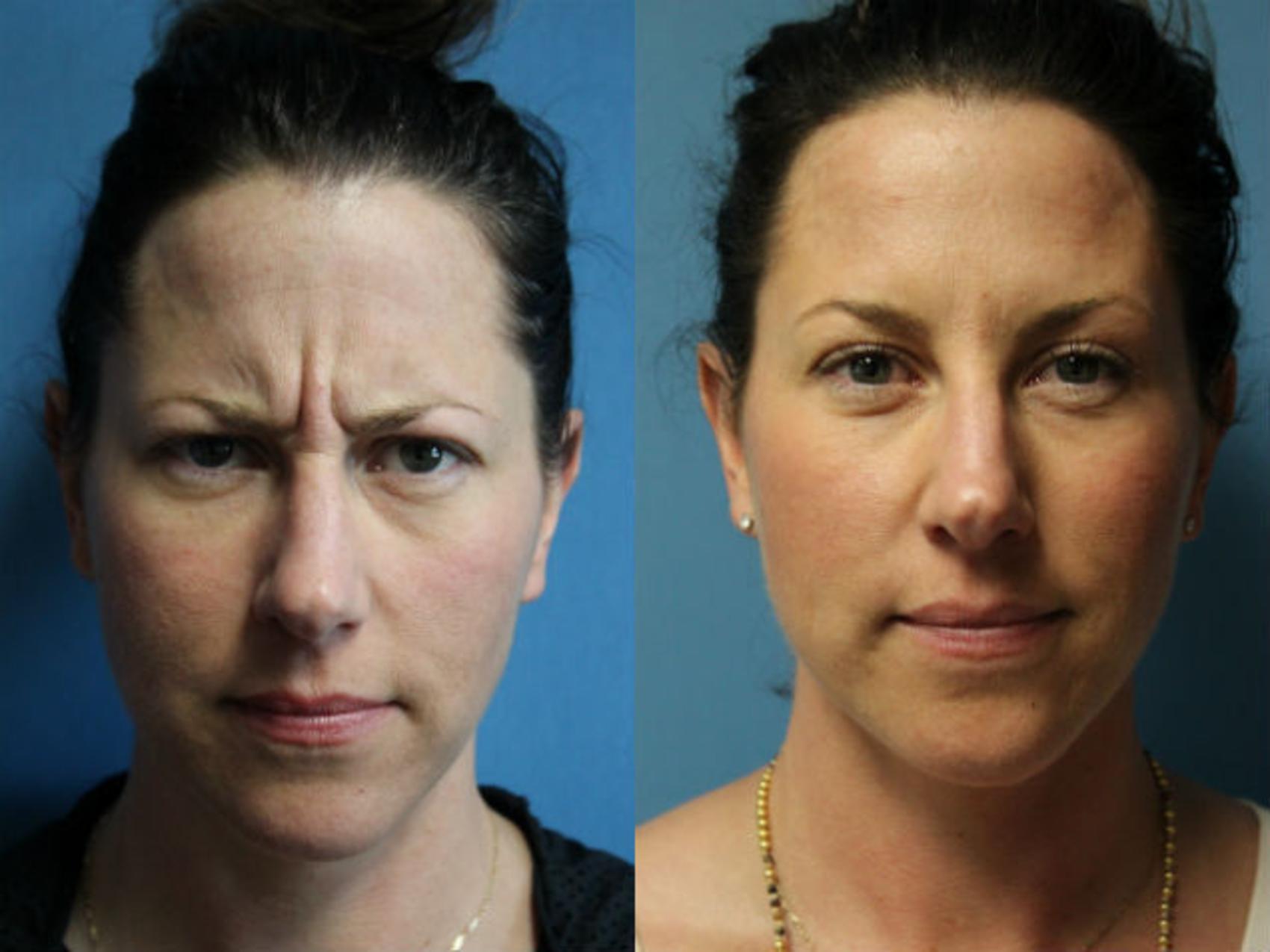
J-B Weld is a widely recognized brand of epoxy adhesive, often used for repairs on various materials. Its suitability for aluminum, a lightweight and corrosion-resistant metal frequently employed in automotive, aerospace, and construction applications, is a common query among DIY enthusiasts and professionals alike. A successful aluminum repair requires an adhesive capable of withstanding environmental stresses and forming a robust bond with the metal’s surface.
Durable adhesion to aluminum allows for the repair of cracks, fills gaps, and even rebuilds missing sections, potentially saving significant costs associated with replacing entire components. Historically, achieving a strong, lasting bond with aluminum posed challenges due to the metals inherent oxide layer. Modern epoxy formulations, however, have addressed this issue through advanced chemical bonding and surface preparation techniques. This advancement significantly broadened the repair options for aluminum structures and objects.
This article will further explore the practical application of epoxy adhesives on aluminum, including specific product recommendations, appropriate surface preparation methods, and best practices for achieving optimal bonding strength and longevity. Factors influencing bond success, such as temperature, curing time, and the specific type of aluminum alloy, will also be examined.
1. Surface Preparation
Surface preparation is paramount for successful adhesion of JB Weld to aluminum. Aluminum readily oxidizes, forming a thin layer of aluminum oxide that inhibits strong bonding with adhesives. Effective surface preparation removes this oxide layer and creates a receptive surface for the epoxy to adhere to, ensuring a durable and long-lasting repair.
-
Cleaning
Thorough cleaning removes contaminants like grease, oil, dirt, and other debris that can interfere with adhesion. Solvents such as acetone or isopropyl alcohol are effective for this purpose. Residues from these cleaning agents must also be completely removed before applying the adhesive. For instance, a greasy engine part must be degreased before attempting a repair. Failure to clean properly can lead to weak bonds and premature failure of the repair.
-
Mechanical Abrasion
Roughening the aluminum surface through mechanical abrasion further enhances adhesion. This can be achieved using sandpaper, a wire brush, or abrasive pads. Sanding creates microscopic scratches that increase the surface area available for bonding, similar to how roughened wood accepts stain more readily than smooth wood. This mechanical keying provides a stronger physical interlock between the epoxy and the aluminum.
-
Chemical Etching
While mechanical abrasion is effective, chemical etching using a dedicated aluminum etching solution can further improve adhesion, particularly in critical applications. Etching removes the oxide layer chemically and may create a more uniform surface profile for bonding. Similar to how a primer enhances paint adhesion, an etching solution prepares the aluminum for optimal bonding with the epoxy.
-
Rinsing and Drying
After any cleaning or etching process, thorough rinsing with clean water and subsequent drying are essential. This removes any remaining cleaning agents, etching chemicals, or loose debris generated during the abrasion process. Residual chemicals can negatively affect the epoxys curing process and weaken the bond. Similar to cleaning a wound before applying a bandage, ensuring a clean, dry surface is fundamental for successful adhesion.
Proper surface preparation is the foundation for a successful JB Weld repair on aluminum. By meticulously cleaning, abrading, and properly drying the surface, the aluminum substrate becomes primed for optimal adhesion, ensuring a robust and durable repair that can withstand stress and time. Neglecting these steps compromises the integrity of the bond, increasing the likelihood of repair failure.
2. Aluminum Alloy Type
The effectiveness of JB Weld on aluminum is significantly influenced by the specific alloy being repaired. Different aluminum alloys possess varying chemical compositions and metallurgical properties that affect their reactivity and adhesion characteristics. Understanding these differences is crucial for selecting the appropriate JB Weld product and ensuring a successful, long-lasting repair.
-
Wrought Alloys (e.g., 1100, 3003, 6061)
Wrought alloys, commonly used in structural applications due to their formability and strength, generally exhibit good adhesion with epoxy adhesives like JB Weld. The 6061 alloy, frequently found in bicycle frames and automotive components, is a prime example. Its relatively clean and consistent surface structure makes it amenable to bonding. However, even within wrought alloys, variations in composition can influence adhesion; research specific alloy properties before proceeding. For example, some alloys, such as the 5052 variant, contain higher magnesium content and will benefit from specialized surface pretreatments and high strength epoxies.
-
Cast Alloys (e.g., 2024, 7075)
Cast alloys, often used in high-stress applications like aircraft parts and engine blocks due to their strength and castability, can be more challenging to bond. The 7075 alloy, known for its high zinc content, may require specialized surface treatments to enhance adhesion. These alloys often have a more porous surface structure, which can affect bond strength and longevity. The porosity of cast alloys can cause air bubbles or weaker adhesive regions, making precise application and potential reinforcement necessary.
-
Heat-Treatable Alloys
The heat treatment state of an aluminum alloy can influence its bonding characteristics. Heat treating alters the microstructure of the alloy, which can affect surface energy and reactivity with adhesives. For example, a solution heat-treated and artificially aged 6061 alloy might exhibit different bonding properties than the same alloy in an annealed state. Understanding the heat treatment history is therefore important for predicting adhesion performance. As a result, research into the specific alloy’s heat treatment condition (T4, T6, etc.) is necessary to determine appropriate surface preparation and product selection.
-
Considerations for Specific Applications
The specific application and service environment further dictate adhesive selection and surface preparation. For example, repairs on aluminum components exposed to high temperatures, such as engine parts or exhaust systems, necessitate high-temperature epoxy formulations. Similarly, marine applications, where exposure to saltwater is a concern, demand adhesives resistant to corrosion and environmental degradation. These considerations ensure repair longevity and prevent premature failures due to environmental factors.
Selecting the appropriate JB Weld product and surface preparation technique requires careful consideration of the specific aluminum alloy involved. Consulting technical data sheets and conducting adhesion tests on scrap material from the same alloy is highly recommended. This ensures compatibility and maximizes the likelihood of a successful, durable repair, ultimately contributing to the overall integrity and longevity of the repaired aluminum component.
3. JB Weld Product Selection
JB Weld offers a range of epoxy products, each formulated for specific applications and materials. The success of using JB Weld on aluminum hinges critically on selecting the appropriate product. Choosing the wrong formulation can lead to weak bonds, premature failure, and ultimately, an unsuccessful repair. Product selection must consider the specific aluminum alloy, the intended application, and the environmental conditions the repair will encounter. For instance, using a standard epoxy intended for steel on aluminum might result in poor adhesion due to the difference in surface reactivity and the presence of aluminum oxide. Conversely, selecting a product specifically designed for aluminum, such as JB Weld’s AluminumWeld or other aluminum-specific epoxies, significantly increases the likelihood of a successful bond.
The importance of proper product selection extends beyond simply achieving initial adhesion. Factors like temperature resistance, chemical resistance, and curing time also vary between JB Weld products. A repair on an engine block, for example, requires a high-temperature epoxy capable of withstanding elevated operating temperatures. Using a standard epoxy in this scenario would likely result in adhesive failure due to heat degradation. Similarly, repairs on aluminum boats or marine components necessitate an epoxy resistant to saltwater corrosion. Choosing a product tailored to the specific application ensures the repair’s long-term durability and performance. Therefore, understanding the performance characteristics of different JB Weld products is crucial for matching the adhesive to the repair’s demands.
Careful consideration of aluminum alloy type, service environment, and required performance characteristics allows for informed JB Weld product selection. Consulting product data sheets and conducting small-scale tests on scrap material provide valuable insights into adhesive compatibility and performance. This proactive approach minimizes the risk of repair failure, optimizes bond strength and longevity, and ultimately determines the overall success of using JB Weld on aluminum. Neglecting proper product selection undermines the entire repair process, potentially leading to wasted time, resources, and ultimately, a compromised aluminum component.
4. Curing Time and Temperature
Curing time and temperature are critical factors influencing the success of JB Weld repairs on aluminum. These parameters directly affect the epoxy’s final strength, durability, and overall performance. Understanding the relationship between curing time, temperature, and the resulting bond strength is essential for achieving optimal results and ensuring a long-lasting repair. Ignoring manufacturer recommendations regarding curing conditions can compromise the integrity of the bond, leading to premature failure and potentially jeopardizing the structural integrity of the repaired component.
-
Temperature Dependence of Cure Rate
Epoxy curing is a chemical reaction, and like most chemical reactions, its rate is temperature-dependent. Higher temperatures generally accelerate the curing process, while lower temperatures slow it down. JB Weld products typically specify an ideal temperature range for optimal curing. Operating outside this range can lead to incomplete curing, resulting in a weaker bond. For example, curing JB Weld at temperatures significantly below the recommended range may result in a soft, tacky bond susceptible to failure under stress. Conversely, excessively high temperatures can lead to rapid curing, potentially trapping air bubbles within the epoxy and creating weak points.
-
Impact of Curing Time on Bond Strength
Sufficient curing time is crucial for achieving maximum bond strength. While higher temperatures accelerate the curing process, the epoxy still requires adequate time to fully crosslink and develop its ultimate strength. Prematurely stressing a bond before it has fully cured can weaken it significantly, potentially leading to failure. For example, reassembling a repaired aluminum component before the JB Weld has reached its full cure strength might subject the bond to stresses it cannot yet withstand, increasing the risk of failure. Following manufacturer-recommended cure times ensures the epoxy reaches its optimal performance characteristics.
-
Environmental Considerations
Ambient temperature and humidity can influence the curing process. Cold or damp environments can slow down the curing rate, requiring longer cure times. Conversely, hot and dry conditions can accelerate curing. Inconsistent environmental conditions during the curing process can lead to uneven curing and potentially compromise bond strength. For outdoor repairs or repairs in uncontrolled environments, protecting the bonded area from temperature fluctuations and moisture is crucial for ensuring a consistent and complete cure. For example, using a heat lamp or insulating the repair area can help maintain a stable temperature during the curing process, particularly in cold environments.
-
Post-Cure Considerations
Some JB Weld products benefit from a post-cure process, involving heating the cured epoxy to a specific temperature for a defined period. Post-curing further enhances the epoxy’s chemical and thermal resistance, leading to a more robust and durable bond. While post-curing may not be required for all applications, it can significantly improve performance in demanding environments, such as engine compartments or marine applications. For high-performance applications, consulting product data sheets for post-cure recommendations is essential.
Precise adherence to recommended curing times and temperatures is fundamental for realizing the full potential of JB Weld on aluminum. These parameters are not merely suggestions but critical components of the chemical reaction that transforms the liquid epoxy into a strong, durable bond. Understanding the interplay between temperature, curing time, and the resulting bond strength empowers users to achieve successful, long-lasting aluminum repairs. Ignoring these crucial parameters can lead to suboptimal bond performance, increasing the risk of repair failure and potentially compromising the integrity of the repaired component.
5. Application Technique
Proper application technique is crucial for realizing the full potential of JB Weld on aluminum. The method of applying the epoxy directly influences the bond’s strength, durability, and overall success. Even with meticulous surface preparation and appropriate product selection, incorrect application can undermine the entire repair process, leading to weak bonds, premature failure, and ultimately, a compromised repair. Application technique encompasses several key aspects, each contributing to the final outcome.
Accurate mixing of the two-part epoxy is paramount. JB Weld and similar products consist of a resin and a hardener that must be combined in precise ratios. Incorrect mixing ratios can alter the curing process, resulting in a suboptimal bond. Insufficient mixing can lead to areas within the bond where the epoxy does not fully cure, creating weak points susceptible to cracking or separation. Thorough and uniform mixing, following manufacturer instructions precisely, ensures the correct chemical reaction occurs, leading to a strong and consistent bond.
Applying the correct amount of epoxy is also critical. Too little epoxy can result in incomplete coverage of the repair area, leading to weak bonding and potential gaps where stress concentrations can develop. Conversely, applying an excessive amount of epoxy can create a thick, uneven layer that cures improperly and may not adhere fully to the aluminum surface. A properly applied epoxy layer should be thick enough to fill gaps and ensure complete coverage but thin enough to allow for proper curing and prevent excessive material buildup. For example, when repairing a crack in an aluminum casing, applying a thin, even layer of JB Weld along the crack ensures proper adhesion and structural integrity. Applying a large blob would not only be wasteful but could also lead to uneven curing and a weaker repair.
Maintaining consistent pressure during the curing process is often necessary, especially for bonding two separate aluminum pieces. Clamping or using weights can help maintain close contact between the surfaces being bonded, ensuring a tight, uniform bond. For instance, when bonding two aluminum sheets together, applying even pressure with clamps ensures consistent contact between the epoxy and both surfaces, maximizing bond strength. This pressure also minimizes the risk of voids or gaps forming within the cured epoxy.
Mastering proper application techniques, including precise mixing, appropriate epoxy quantity, and consistent pressure, is essential for successful JB Weld repairs on aluminum. These seemingly minor details play a significant role in the overall performance and longevity of the bond. Neglecting proper application procedures, even with ideal surface preparation and product selection, compromises the repair’s integrity, increasing the likelihood of failure and ultimately undermining the intended purpose of using JB Weld to create a strong, durable bond capable of withstanding stress and time.
Frequently Asked Questions
This section addresses common inquiries regarding the use of epoxy adhesives like JB Weld on aluminum, providing concise and informative responses to clarify potential uncertainties and misconceptions.
Question 1: Can JB Weld be used on all types of aluminum?
While JB Weld can adhere to many aluminum alloys, achieving optimal bond strength requires careful consideration of the specific alloy’s composition and properties. Certain alloys, particularly those containing higher amounts of magnesium or silicon, might necessitate specialized surface treatments or specific JB Weld formulations. Consulting product data sheets and conducting small-scale tests on scrap material from the target alloy is recommended.
Question 2: How critical is surface preparation when using JB Weld on aluminum?
Surface preparation is paramount. Aluminum’s oxide layer inhibits adhesion. Thorough cleaning, mechanical abrasion (sanding, wire brushing), and potentially chemical etching are essential for removing the oxide layer and creating a receptive surface for the epoxy. Neglecting proper surface preparation significantly compromises bond strength and durability.
Question 3: What is the best JB Weld product for aluminum repair?
JB Weld offers several products suitable for aluminum, including specific formulations like AluminumWeld. The optimal choice depends on the application’s specific requirements, such as temperature resistance, chemical exposure, and load-bearing demands. Consulting product data sheets helps identify the most appropriate product.
Question 4: Does temperature affect the curing process of JB Weld on aluminum?
Temperature significantly influences cure time and ultimate bond strength. Lower temperatures slow curing, while higher temperatures accelerate it. Adhering to the manufacturer’s recommended temperature range ensures optimal curing and performance. Extreme temperatures can negatively impact the bond’s integrity.
Question 5: How long does JB Weld take to cure on aluminum?
Cure times vary depending on the specific JB Weld product and ambient temperature. Consult the product data sheet for precise curing times. Full cure strength typically requires a specific duration, even after the epoxy appears solid. Prematurely stressing the bond before full cure can weaken it.
Question 6: Is JB Weld a permanent fix for aluminum?
While JB Weld provides strong and durable repairs, its permanence depends on several factors, including the specific application, environmental conditions, and proper application technique. In many cases, it offers a long-lasting solution, but certain high-stress or extreme environments might necessitate alternative repair methods for optimal longevity.
Careful consideration of alloy type, surface preparation, product selection, and curing conditions ensures the success of using JB Weld on aluminum. These factors influence the ultimate bond strength, durability, and longevity of the repair.
The next section provides practical tips and best practices for using JB Weld effectively on aluminum, guiding users through the repair process to achieve optimal results.
Tips for Successful Aluminum Repair with Epoxy
Achieving durable and reliable aluminum repairs using epoxy adhesives requires careful attention to detail and adherence to best practices. The following tips offer practical guidance for maximizing the effectiveness of such repairs, ensuring strong, long-lasting bonds.
Tip 1: Meticulous Surface Preparation is Essential
Thorough cleaning with a suitable solvent, such as acetone or isopropyl alcohol, is crucial for removing contaminants. Mechanical abrasion via sanding or wire brushing enhances adhesion by creating a roughened surface. In critical applications, chemical etching using an aluminum etching solution further optimizes adhesion. Proper rinsing and drying eliminate any residual cleaning agents or debris. Example: Repairing a cracked aluminum wheel requires meticulous cleaning and sanding of the damaged area to ensure optimal epoxy adhesion.
Tip 2: Alloy Identification Informs Product Selection
Different aluminum alloys exhibit varying bonding characteristics. Identifying the specific alloy is crucial for selecting the appropriate epoxy formulation. Consulting technical data sheets and conducting small-scale tests on scrap material of the same alloy verifies compatibility. Example: 7075 aluminum, commonly used in aerospace applications, might require a specialized epoxy formulated for high-strength alloys.
Tip 3: Precise Mixing Ratios Ensure Proper Curing
Two-part epoxy adhesives must be mixed in the precise ratios specified by the manufacturer. Accurate measurement and thorough mixing prevent incomplete curing and ensure optimal bond strength. Example: Using calibrated mixing sticks or syringes ensures the correct resin-to-hardener ratio, preventing a sticky, uncured epoxy.
Tip 4: Controlled Application Optimizes Bond Integrity
Applying the correct amount of epoxy is essential. Too little can result in inadequate coverage, while excessive epoxy creates a thick, potentially weak bond. Example: Repairing a small crack requires a thin, precise application of epoxy, whereas filling a larger void necessitates layering the epoxy to prevent excessive heat buildup during curing.
Tip 5: Maintaining Consistent Pressure Enhances Bond Strength
Applying consistent pressure during curing, using clamps or weights, ensures close contact between the bonded surfaces. This promotes uniform curing and maximizes bond strength. Example: When bonding two aluminum plates, clamping them together evenly distributes pressure across the bonded area, resulting in a stronger, more uniform bond.
Tip 6: Temperature Control Influences Cure Time and Bond Strength
Epoxy curing is temperature-dependent. Adhering to the manufacturer’s recommended temperature range is critical for optimal curing and bond strength. Example: Curing epoxy in a temperature-controlled environment, especially during colder months, ensures proper and complete curing, leading to a stronger bond.
Tip 7: Allow Adequate Curing Time for Optimal Strength
Even after the epoxy appears solid, full cure strength requires the designated curing time specified by the manufacturer. Avoid stressing the bond prematurely. Example: A repaired aluminum bicycle frame should not be ridden until the epoxy has reached its full cure strength, typically after 24 hours or longer depending on the product and ambient temperature.
Adhering to these tips ensures successful epoxy application on aluminum components. Proper surface preparation, precise mixing, controlled application, and adherence to curing recommendations contribute to strong, durable, and long-lasting repairs.
The following conclusion summarizes the key takeaways for effectively utilizing epoxy adhesives on aluminum, emphasizing the benefits of proper technique and material selection.
Conclusion
The suitability of JB Weld for aluminum repair depends significantly on several interconnected factors. Material selection within the JB Weld product line, specific aluminum alloy properties, meticulous surface preparation, and adherence to manufacturer-recommended curing procedures all play critical roles in determining the bond’s ultimate strength and longevity. While various JB Weld products offer potential solutions for aluminum repair, assuming universal compatibility across all aluminum types and applications is a misconception. Careful consideration of these factors is essential for achieving a durable, reliable bond.
Effective aluminum repair with epoxy requires a nuanced approach, moving beyond simply applying adhesive. Understanding the chemical interactions between the epoxy, the specific aluminum alloy, and the environment is crucial for successful outcomes. Through proper material selection, diligent surface preparation, and precise application techniques, durable and reliable aluminum repairs are achievable. Neglecting these crucial elements compromises the repair’s integrity, potentially leading to premature failure. Further research into specific aluminum alloys, epoxy formulations, and advanced bonding techniques will continue to refine and expand the possibilities of aluminum repair with adhesives.



